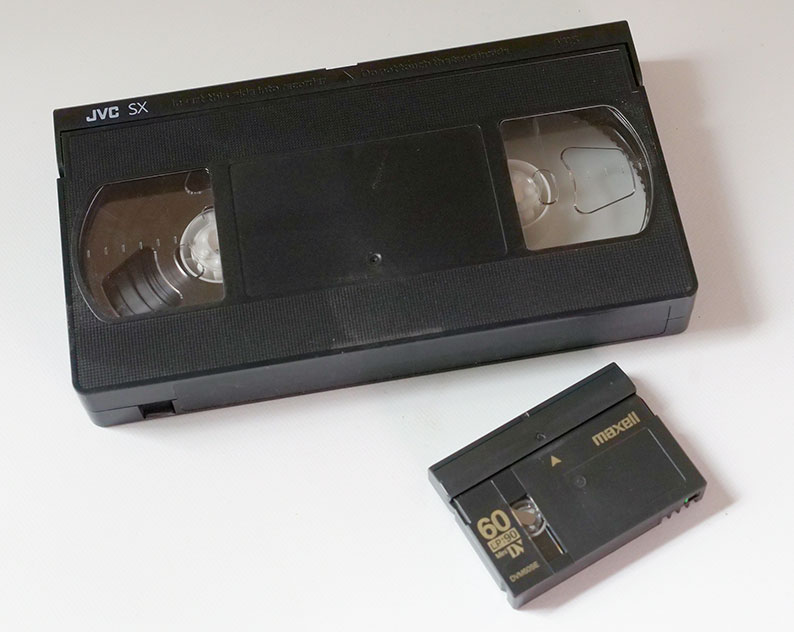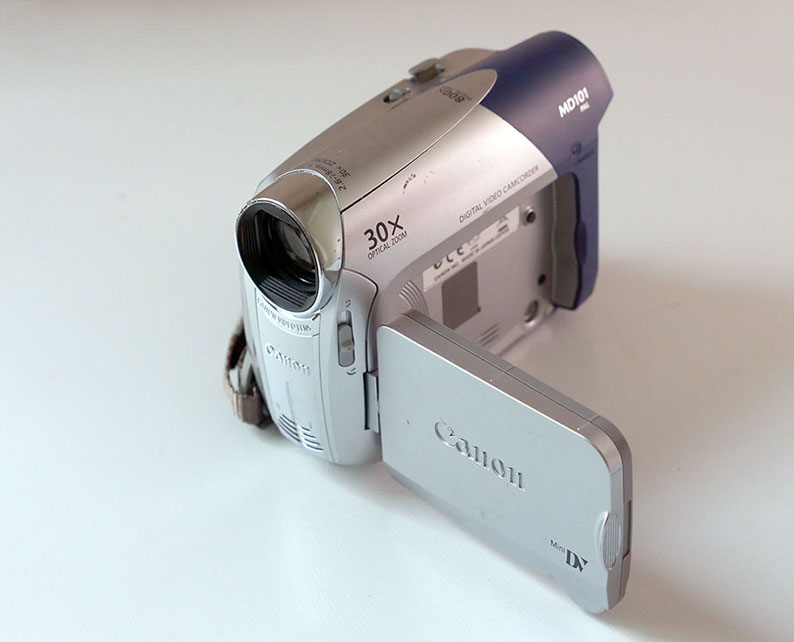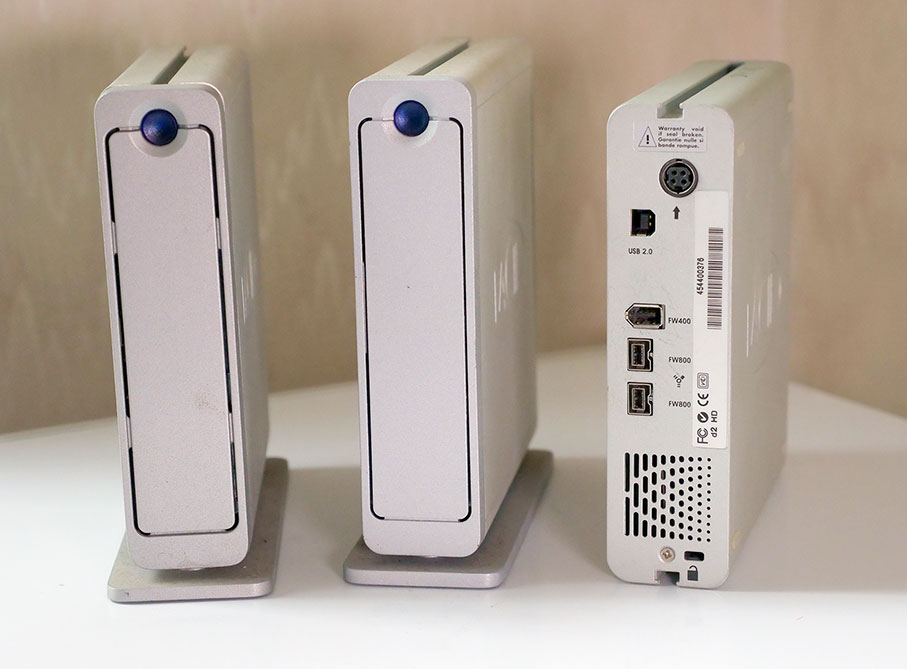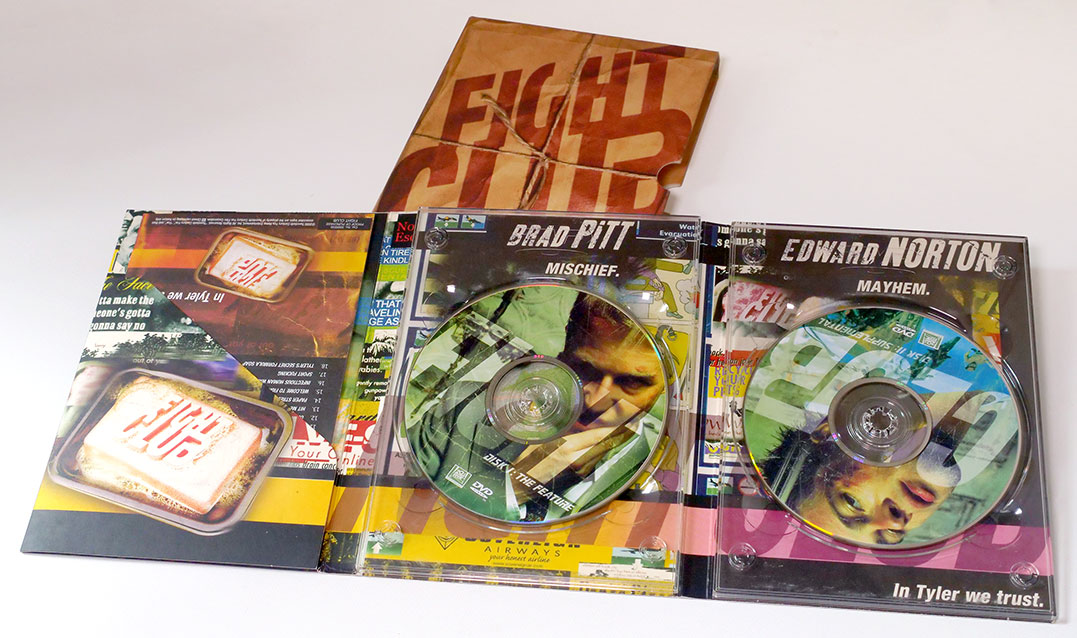Just recently, I was struck by an observation made by camera operator Steven Sheil on a newly filmed special feature on the Indicator Blu-ray of One for the Road when discussing the decision to shoot the film on DVCAM. Before I get into why, a quick technological history lesson, primarily for those young enough to never have ever encountered that particularly video acronym.
While those brought up on the crisp, clean visuals of modern HD-cameras may sniff at the quality now, for those of us working in budget-end video in the 1990s, the arrival of Mini-DV was a seriously big deal. It represented a substantial improvement on analogue tape formats like Hi-8 and SVHS and being the first affordable domestic digital tape format, it allowed you to capture the footage into a non-linear editing system, edit your video, then output the finished product back to tape with no drop in quality, something that was simply wasn’t possible with the older, lower quality analogue formats. For the first time, we could easily add effects, titles and transitions, and change our minds about the timing of an edit or even the shot used without having to backtrack and redo all of the edits that preceded it. For a non-HD format that was viewed played primarily on CRT monitors, it also looked damned good. And the tapes were so small. For anyone who had been working on SVHS or even a pro format like Betacam, the diminutive size of DV tapes was a joy in itself. If you went on location, you could carry spare tapes in your pocket without being weighed down, and when the domestic DV camcorders arrived, they were even more portable than their already compact Hi-8 equivalent.

Compare the size of a DV tape to the VHS tapes it effectively replaced
DVCAM was a higher quality variant of Mini-DV, developed by Sony and aimed at the professional and (especially) semi-professional markets, where the company’s PD-150 camcorder quickly became the videographer’s camera of choice. Let’s be clear, the format was never going to rival the richness, definition or dynamic range of film, but like those first lightweight 16mm cameras that freed documentary makers to shoot handheld and give birth to the Cinéma Vérité and Direct Cinema movements, for many videographers working on a tight budget it was liberating. It found widespread adoption in educational, training and industrial video circles – I certainly used it for work in all three, and for more besides – but more surprisingly was also adopted by some enterprising feature film makers. For them, the freedom it afforded became more important than image quality. It lowered the production budget and allowed you to work with a far smaller crew using cameras whose diminutive size was less likely to attract the attention of passers-by or security personnel. The comparatively low cost of the cameras also meant that you could buy the equipment you needed rather than having to hire it, and thus use it for an extended period without a significant hit to the production cost. Thus, Franny Armstrong was able to stick with an epic legal battle for years to make her superb documentary, McLibel; David Lynch was free to go his own sweet way without fear of studio interference on Inland Empire; Danny Boyle could grab shots of a deserted London for 28 Days Later in a fraction of the time it would have taken to do likewise with 35mm film; and Thomas Vinterberg and Lars von Trier launched an entire film movement with the Dogme 95 films, Festen and Idioterne.
Which brings me back to Steven Sheil’s comment about One for the Road. When talking about shooting on DVCAM and how it helped to shape the film’s deliberately unpolished aesthetic, he also noted that the period during which the format was adopted as an alternative to film did not last long, being closed forever with the arrival of HD as the new standard for TV screens and video cameras. The DV aesthetic is thus one that is tied to a very specific period of cinema history, far briefer than the one in which films played without synchronised sound or were shot exclusively in black-and-white. Sheil’s comments struck a chord with me for a very particular reason. I shot a lot of material on Mini-DV during this time, most of which was captured on a range of non-linear video editing systems – primarily Avid and Final Cut Pro – and once edited was output to master DV tapes, from which any required duplicates or discs were then made. The tapes were then stuck in a cupboard in case they were ever needed again later. They rarely were. So small were the domestic DV camcorders that I even occasionally took one on holiday with me, and that’s where the title of this particular blog comes into play.
A year or ago, when I was working from home in isolation in the period immediately following the pandemic-enforced lockdown, the fact that I had been in the same location for so long saw my work life and private life start to bleed into one another, and I began looking for things to do that didn’t involve doing design work, writing essays, or creating instructional animations. In the process of clearing up a room that was (and still is) chock full of stuff I’ve just not got around to sorting or getting rid of, I found a box containing over 50 Mini-DV tapes. Not all of them were labelled (that’s me all over), but amongst the ones that were, a handful of them immediately stood out. These included video footage of a very special trip to Japan when I visited a friend in Tokyo, met the staff at The Japan Academy of Film, got drunk with some of the students, and had the most relaxing time of my life at an onsen in Wakayama. On two others were a trip that Camus and I made to Portmeirion in Wales to attend a weekend celebrating The Prisoner, one at which he – as the director of an excellent TV special about the show’s devoted fandom – was a guest speaker. These were tapes I had promised myself repeatedly in the past that I would capture onto hard disc and edit, a task I somehow kept putting off until later and never got around to actually doing. Instead I packed them away and all but forgot about them. Aha! Now I had a job that I could dive into with enthusiasm.
Except…
Except I didn’t own a DV player or a DV camera. The DV cameras I used to use at work had long ago been disposed of or passed onto others, and the hybrid DV/HD professional Sony camera I had hung onto had been donated to the media department of a distant school when we made the switch to memory card-based HD. I contacted the friends that I knew also used to work with the mini-DV format, and quickly discovered that they had also since sold or disposed of their equipment when they made the jump to HD. It suddenly struck me that the format that I had worked on for several years, and on which so much material had been recorded, had not just since become obsolete, it had all but vanished. A search for even low-end new camcorders yielded nothing, and while I did find a few being sold on eBay (a site I’ve curiously never used and am still unfamiliar with the workings of), they weren’t exactly cheap. There’s also no way of checking in advance the condition of tape heads, which at best could be a little worn but at worst might chew up and destroy my precious tapes.

The life-saving Canon MD101 palmcorder
This increasingly stomach-churning search continued for several weeks and saw me digging up phone numbers of people I’ve not spoken to for years. Eventually, I struck gold and found someone who had a small JVC Palmcorder whose play head, I was assured, was still in sparkling condition. The owner no longer had any use for it and thus posted it to me. My sigh of relief was so loud it was probably mistaken locally for an approaching storm. A few nervous tests on tapes that I could afford to lose (mainly because I’d had the foresight to actually capture the footage that they contained) affirmed that the play heads were indeed in fine shape, and I was thus ready to capture my footage to disc. Oh, do you bloody think so?
TTechnological change barrier part two came when I went to connect the camcorder to the computer on which my editing software is stored. Despite being six years old, my iMac has four USB connectors and a single Thunderbolt port. The camera needs FireWire, a technology developed by Apple that helped open up the world of non-linear editing to the amateur and budget-conscious semi-professional alike, but which was later abandoned by the company and dropped from its computers. Seriously? Here, my failure to get rid of anything finally paid off, as tucked away under a desk in the same spare room was an old ‘cheese grater’ Mac Pro that I inherited from my workplace when these already old machines were being thrown out. Might come in useful one day, I figured, and after being in storage for years, it finally did. Despite a couple of non-functional ports, one of the FireWire 800 inputs still worked. And what’s in this bulging plastic bag in the corner? Why, it’s a collection of old computer cables, amongst which was one with a FireWire 800 connector at one end and a FireWire Mini connector at the other. And Final Cut Pro 7 was still installed on the Mac Pro hard drive. I was thus finally able those precious visual memories to disc. But as Sheil so astutely noted, this technological breakthrough that once so excited us is now confined to a relative short period of cinema history. As a result, it dawned on me how close I came to never seeing those images again.
This got me thinking about the increasingly rapid pace of technological change and how systems and formats seem to come and go with increasing rapidity, and how, if you’re not fast enough on the resale train, you end up stuck with cupboards full of out-of-date and increasingly useless technology. It’s almost an extension of Moore’s Law, which was born of Intel co-founder Gordon Moore’s prediction that computers would double in power every couple of years, fuelled in part by the increasingly disposable nature of this and related technology. Six years or so ago I bought an iPhone 6, for example, a quite whopping purchase for me at the time. Having repeatedly smashed and clumsily replaced the screen on its third-generation predecessor, I took better care of this one, keeping it in a leather case that protected it from tumbles so well that if you remove the phone from it, it looks like new. Six years is not a long time, but come the pandemic, this phone proved to be too old to run the NHS app that we were all encouraged to install. Recently, I went to launch the PlayStation app I installed some time ago and was informed that this version was out of date and that I had to update it. When I went to the App Store to download this new version, however, I was informed that it could not be installed on hardware so laughably ancient. Six years. This phone has another 94 years to go until it qualifies for antique status, but it’s already considered to be outdated hardware.
A further search of boxes in the Spare Room of Stored Memories turned up further evidence of the temporary nature of modern technology. I found a Hi-8 video tape on which I also have footage a past holiday, but tracking down a Hi-8 camcorder these days would likely be even harder than finding one that plays mini-DV. I came across the first handheld gaming computer I ever owned in the shape of the Sony PSP, whose proprietary UMD disc format lasted a mere seven years before being consigned to history. At my workplace some years ago we made our first move into digital audio with the purchase of a professional portable minidisc player, a machine with impressive recording quality but a hopeless battery life for a portable recorder. It cost quite a bit. Anyone still using minidisc now? I’m sure there are some of you reading this who have never even heard of it.

Low capacity FireWire hard drives – got quite a few of these
What else? Well, I’ve got a barrage of files stored on CD-ROM and DVD-ROM, but a computer with no optical disc drive, though USB DVD and even Blu-ray drives are thankfully still easy to come by. I have reams of archived files stored on several hard drives with a solitary FireWire connection. Time to dig out the Mac Pro again. Of course, FireWire was one of a range of previously common computer interface standards that have long since fallen by the wayside, and I’m willing to bet that I still have compatible cables for all of them in that bulging carrier bag upstairs. In addition, the storage capacity of some of these drives seems almost laughable by current standards and requirements. When an iPhone 12 can ship with 256GB of storage memory, think how puny a 250MB hard drive that needs to be plugged into a power outlet to run must seem. Yet just twenty years ago this would have seemed luxurious. And don’t get me started on my 512MB pen drives…
And then there is the media. Those of you too young to have experienced this can only imagine what an impact the arrival of VHS video had on the lives of us film devotees. I worked extra hours and seconds jobs for years to pay for tapes on which to record favourite films and TV series, eventually saving up enough to stop paying rental on a recorder and buy one of my own, and even start purchasing retail tape releases of favourite movies. I’m not sure what size my tape collection grew to, but I know that it lined several walls of my house. Then along came DVD, and in a few short years I replaced many of the films I had on tape with far higher quality DVD editions, which were devoid of tape blips, had stereo or surround soundtracks, and were almost always in the correct aspect ratio. It shows how little I’d learned about the non-permanence of audio-visual technology that when I first launched this site, I chose to name it DVD Outsider. Maybe I simply didn’t expect the site to last for as long as it has.
Over the course of just a few short years, my DVD collection ballooned to an almost unmanageable size, due primarily to the mountain of review discs that were being to us each week, but also thanks to the discs I was buying in sales and the ones I was burning myself from off-air recordings. In no time at all, those VHS tapes started feel redundant and were now taking up space that I needed for DVDs (they were also, a fireman once assured me, a serious fire hazard in a house with so much wood in its construction). Eventually, I took the overdue decision to throw out all the tapes containing films and series that I now had on disc, then disposed of yet more that held material I knew I’d never watch again. I still have about 100 tapes, largely because they are packed with TV shows that have not been made available on other media. Whether I’ll ever watch them again is another matter, and should I want to, I wonder if my old VHS player will still play them without chewing them up.
Then along came HD and Blu-ray and I opted to change the name of the site from DVD Outsider to Cine Outsider, and now whole sections of my DVD collection are starting to look almost as redundant as the tapes they replaced, as I purchase or am sent their Blu-ray equivalent. Most review discs are supplied on Blu-ray now, and as a result, my Blu-ray collection has expanded to the point where it now fills three sizeable bookcases. And then along came 4K UHD. Oh, for pity’s sake! And this is just video. I also still have a smaller but still decent sized collection of vinyl records, many of which I’ve since replaced with CDs of the same, CDs that have since been boxed up because I’ve ripped them all to disc so that I can load them onto my phone to listen to wherever I please. I even have a few cassette tapes of more obscure music and radio series kicking around, but – of course – no working cassette player to listen to them on...
So why do I have all this stuff still hanging around? I’m not sure I know, but I can hazard a few guesses. Despite the fact that I run a review website, I’m the most mentally disorganised person I know, a situation that has gotten worse as I have aged. When I stop using something, I thus tend to put it aside with a back-of-the-brain plan to do something with it at a later date that never arrives. I also tend to continue using any technology for as long as it still functions, or until upgrading becomes an essential move. Complicating things further is a nagging suspicion that I will suddenly find a need for a theoretically redundant cable or connector or piece of technology in the not-too-distant future and discover that it is now impossible or prohibitively expensive to buy. That, of course, turned out to be true.

The American Fight Club DVD packaging is way
cooler than the Blu-ray
Given the right push, I would get rid of much of it, but I’m also dogged by the knowledge that sometimes technological change takes on a cyclic quality. Long after CDs and then streaming came along to theoretically render vinyl records redundant, the format has undergone a serious resurgence amongst audiophiles in recent years and become the collector’s format of choice. Indeed, some LPs and even 45rpm singles are now changing hands for eye-widening amounts of money. I kind of doubt anything in my collection is worth much, but there’s still a voice at the back of my head repeatedly whispering the word “yet…” Not all of this is speculative, I should note. I have two Nikon 35mm film cameras that I put into storage many years ago, but both are in fine condition and are still mechanically and electronically sound, and a resurgence of interest in film as photographic medium has resulted in their current market value being close what I paid for them new. Certain VHS tapes are even being sought by collectors – anything that found itself on the notorious ‘Video Nasties’ list is usually worth something – and while I again don’t seem to have anything that fits the bill at present, I am hanging onto my VHS box set of the original Star Wars trilogy, which is in spanking condition and contains the unmolested cuts of all three films, which are currently unavailable on any digital format. As for the DVDs, most could be probably disposed of if I really wanted to clear the space, but I just can’t bring myself to do it. There are still a good many films that I have on DVD that I do not have an HD equivalent of and that I still intermittently revisit, and the format upscales better than expected on my current 4K system and remains perfectly watchable. I also have a handful of DVD titles that have since been deleted and whose special features (particularly commentaries) were unique to that release, plus a few rather wonderfully presented special editions that I would never part with. That old Mac Pro and the FireWire cables both proved to be life-savers and by running the currently still working VHS player through the DV camera, I’m even able to digitise those old VHS tapes, at least once I get the nerve up to put one of them in my old VHS player.
All of which brings me back to where I started, forever tripping over things in a house with a substantial portion of its potential living space occupied by outdated technology and media. If I got my act together and learned how eBay works, I could probably dispose of some of it, and could probably offer the rest up on Freecycle. I hate throwing anything that still functions in the bin, and the idea of throwing away DVDs just fills me with horror. Wow, this has gone on a bit, and it was all triggered by a single sentence spoken on the special feature of on one of the hundreds of Blu-ray discs I now own. See, that’s now another thing I wouldn’t think of getting rid of now… |